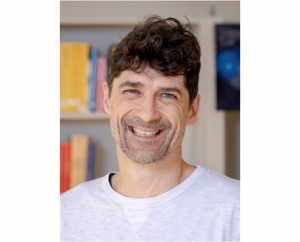Seminar announcement

Pic. Lund University
📅 Tuesday, May 16, 2023; 1:30 pm
📌 WSI, Seminar room S 101
about
“Towards hot-carrier photovoltaics using
heterostructure nanowires”
by
Prof. Heiner Linke
NanoLund and Solid State Physics
Lund University, Sweden
Abstract:
When a solar cell absorbs a photon, the resulting electron-hole pair typically has excess kinetic energy that gets lost to heat. An exciting emerging concept in photovoltaics is to use the nonequilibrium energy of such socalled “hot” charge carriers to boost solar cell efficiency or to design ultra-fast photodetectors. Semiconductor nanowires have several distinct advantages as a system to explore hot-carrier concepts: (i) in thin nanowires, slow carrier relaxation is observed, perhaps due to a phonon-bottleneck effect; (ii) photonic or plasmonic engineering allow to design the location of light absorption and (ii) strain relaxation enables great freedom for heterostructure band engineering for energy filtering. I will report on a series of experiments exploring the possibility of hot-carrier photovoltaic energy conversion in nanowires. One key element is the ability to efficiently harvest electricity from heat stored in electrons. A nearideal quantum dot heat engine in single, InAs/InP heterostructure nanowires, can achieve power production with Curzon-Ahlborn efficiency (> 50% of Carnot efficiency) at maximum power settings, and reaching more than 70% of Carnot efficiency at maximum efficiency settings [2]. In experiments with light as the energy source, we demonstrated hot-carrier photothermoelectric energy conversion with an open-circuit voltage that exceeds the Shockley-Queisser limit, and we demonstrated avenues to increase quantum yield by use of plasmonic elements. [3] Recently, we are interested in avenues allowing us to optimize the so-called fill factor (the shape of the IV-curve) in thermal-to-electric energy conversion and found that intentional symmetry-breaking can play a perhaps unexpectedly positive role that opens up for new approaches based on fundamental symmetry considerations. [4] [1] Fast, J., Aeberhard, U., Bremner, S. P., & Linke, H. Hot-carrier optoelectronic devices based on semiconductor nanowires. Applied Physics Reviews, 8 (2), 021309 (2021). doi:10.1063/5.0038263[2] Martin Josefsson, Artis Svilans, Adam M. Burke, Eric A. Hoffmann, Sofia Fahlvik, Claes Thelander, Martin Leijnse, Heiner Linke: A quantum-dot heat engine operated close to thermodynamic efficiency limits. Nature Nanotechnology (2018)[3] S. Limpert, A. Burke, I-Ju Chen, N. Anttu, S. Lehmann, S. Fahlvik S. Bremner, G. Conibeer, C. Thelander, M.E, Pistol and H. Linke: Single-nanowire, low bandgap hot carrier solar cells with tunable open-circuit voltage Nanotechnology 28, 43 (2017)[4] Chen, I. J., Limpert, S., Metaferia, W., Thelander, C., Samuelson, L., Capasso, F., … Linke, H. (2020). Hot- Carrier Extraction in Nanowire-Nanoantenna Photovoltaic Devices. Nano Letters, 20(6), 4064–4072. doi:10.1021/acs.nanolett.9b04873[5] J. Fast, H. Lundström, S. Dorsch, A. Burke, P. Samuelsson, and H. Linke (2023). Geometric symmetry breaking and nonlinearity can increase thermoelectric power. arXiv:2304.01616
